I’ve called Whittier home for the last 3 years and I’m still learning about the city. I’ve found my my favorite spot for burgers (Norm’s Famous Charbroiled Burgers) and tacos (Tacos Los Carnales) and I’m still learning about the massive amount of history in the city. I’ve already covered the Steak Corral and The Founders Day celebration in other videos, but wanted to return back to Whittier to highlight another handful of my favorite historic spots.
Our 1st stop is the historic Jack’s Whittier Restaurant, which was built in 1956 but can trace its origin all the way back to 1933. That year, Clinton Hust Corcoran, also known as “Jack,” came to Whittier from Long Beach to purchase a lunch counter at Hill’s Pharmacy.

In 1935 he purchased the Rhoades Inn on Whittier Blvd and turned it into Jack’s Salad Bowl restaurant, which was the beginning of his restaurant empire. The Salad Bowl was so successful that he had to enlarge the building in December of 1936.

Photo Credit: Whittier Public Library.
In 1938, he expanded and opened a 2nd Jack’s Salad Bowl in East L.A. and by 1939 The Salad Bowl was seeing an average of 6,000 customers a week! In December of that same year he opened a 3rd restaurant, Jack’s El Rancho, which featured “chicken in the rough,” which was half a fried chicken served with fries, buttered rolls, and a jug of honey, but no silverware. The “rough” part was that you had to eat it with your hands.
He continued expanding, opening a 4th location in 1941 in Downey and opening 4 more restaurants in Whittier, Jack’s Uptown in 1943, Jack’s Beverly Fountain in 1949, and Jack’s Friendly Hills Coffee Shop in 1955, and Jack’s Whittier Restaurant in 1956.
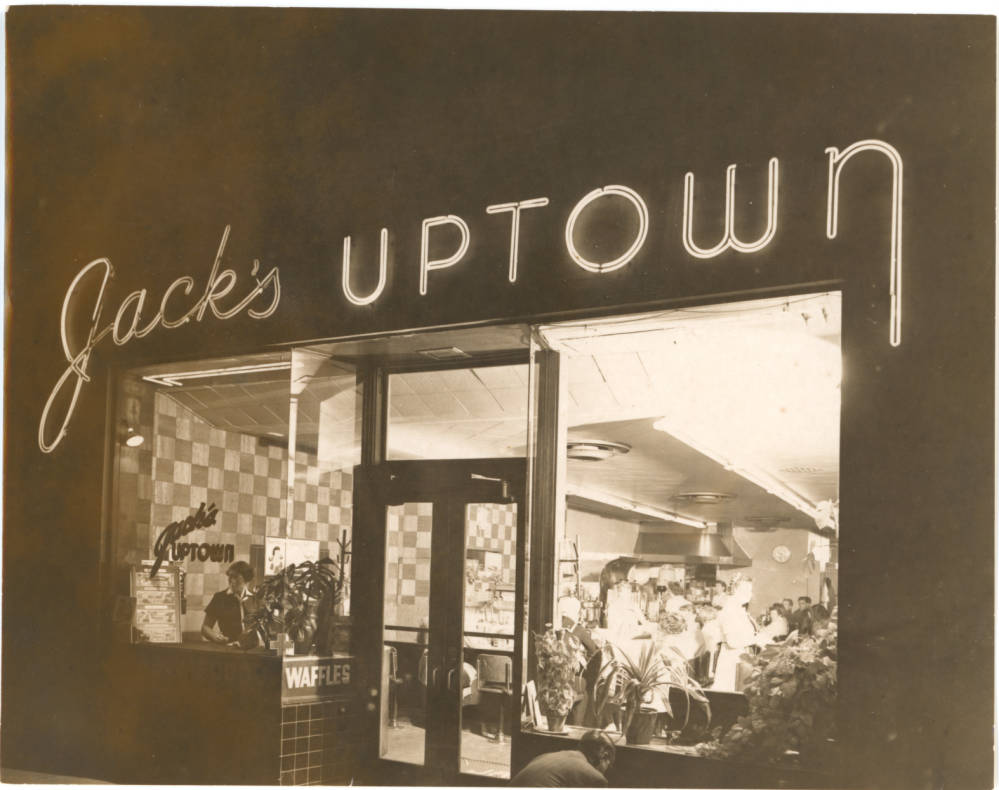
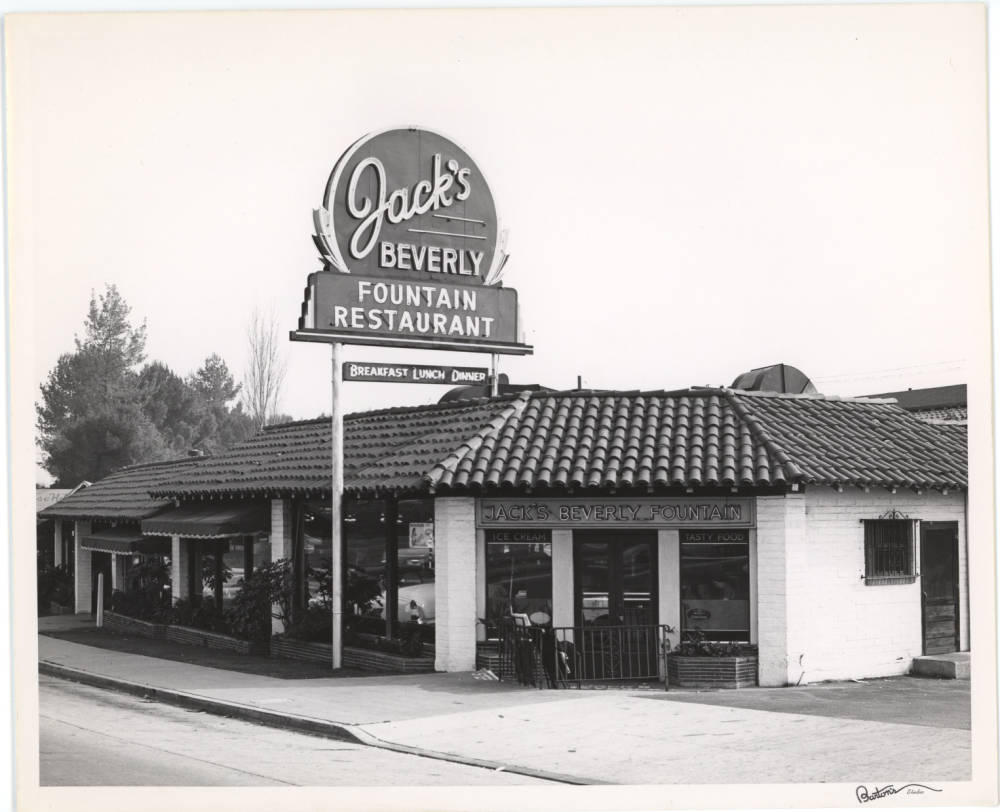
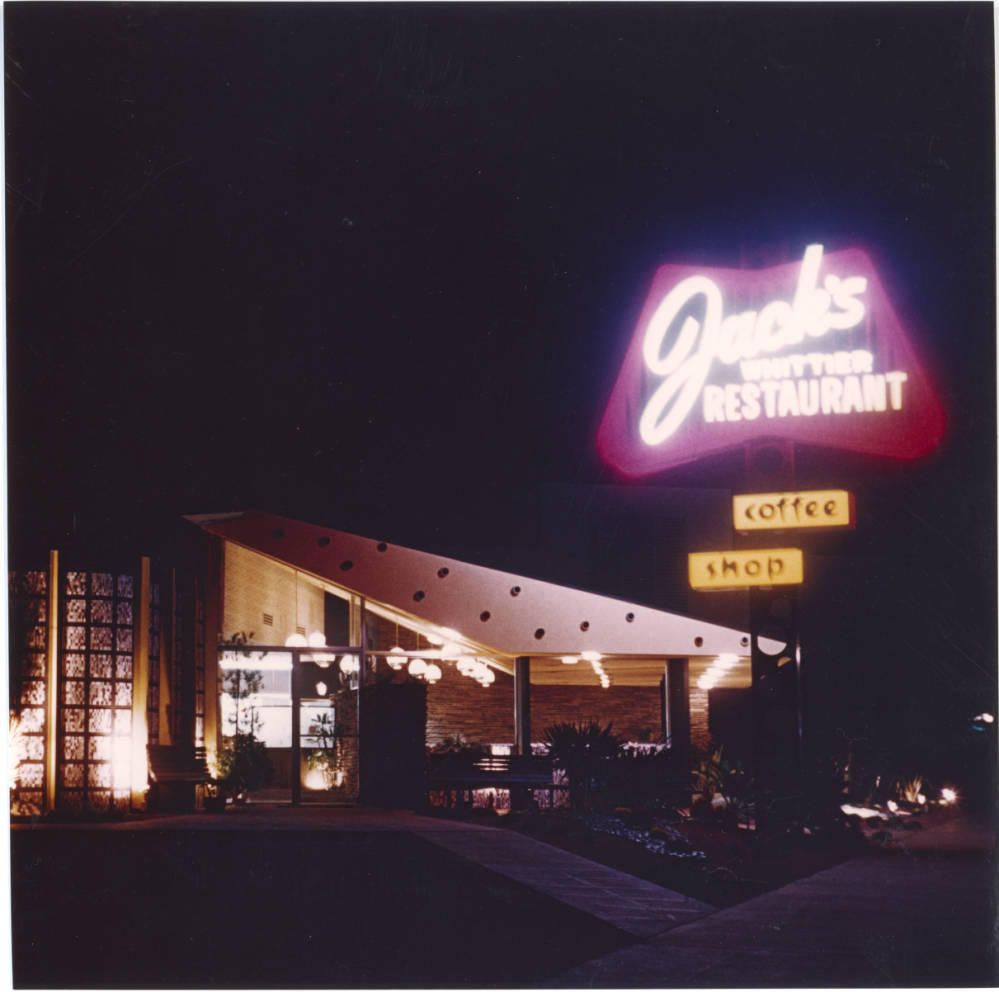
Jack Corcoran was not only a successful restauranteur, but was also very engrained in the Whittier Community. He was a member of the Shriners, the Rotary Club, and the Masonic Lodge. He gifted the old Jack’s El Rancho Building to the city, which became the Palm Park Youth Center, and he was elected director of the Whittier National Bank.
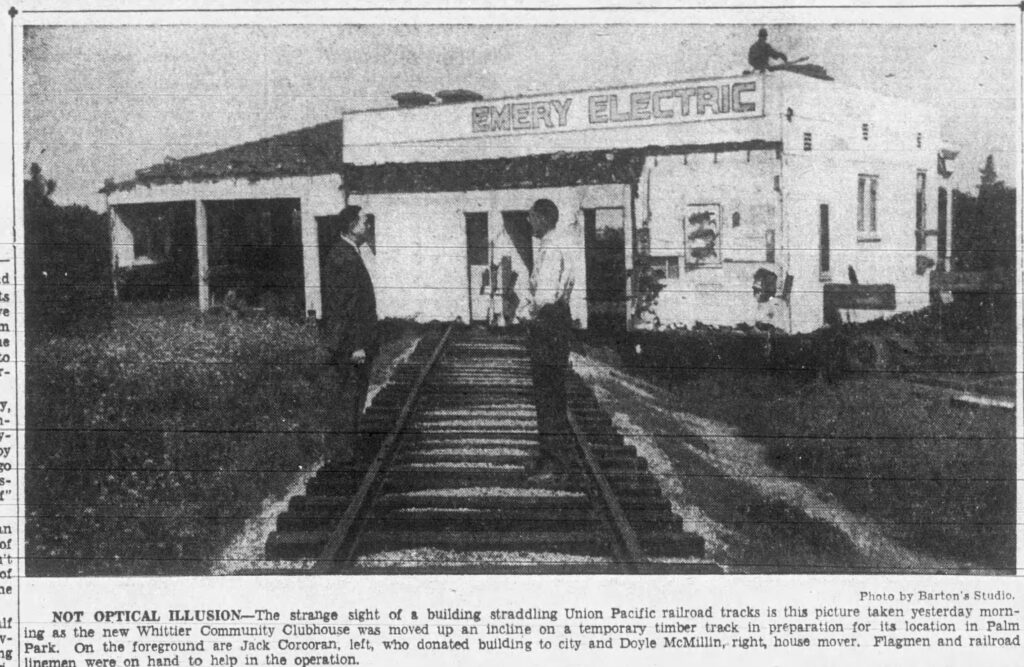
Jack sold his business in 1973 and sadly, the other locations closed and were demolished in the following decades, but Jack’s Whittier Restaurant is still standing and still owned by the family that bought it from Jack.

The restaurant has been remodeled and modernized, but it still holds that vintage charm. They’re famous for their fried chicken but serve up all the American diner food classics and its my favorite spot to grab an ice cream sundae.

Our 2nd stop brings us to the best place to shop for a unique gift or accent piece for your home, King Richard’s Antique Center. The building that houses King Richard’s is over 120 years and is one of the last remaining links to Whittier’s citrus industry.
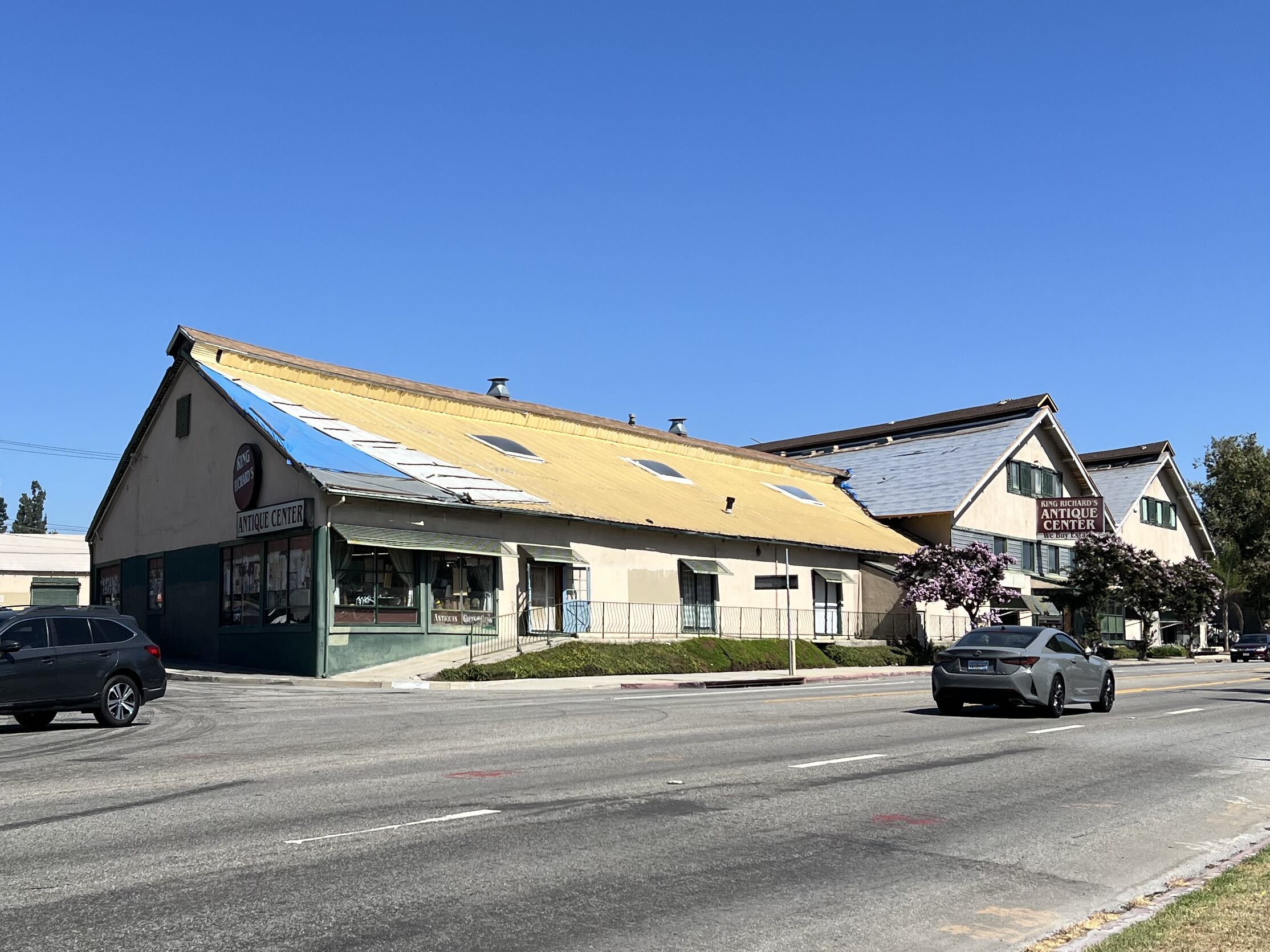
The citrus industry got its start in Whittier during the 1890s when Simon J. Murphy hired Arthur Reed to construct an irrigation system that would bring water from the San Gabriel River to Murphy’s Ranch and the surrounding areas.
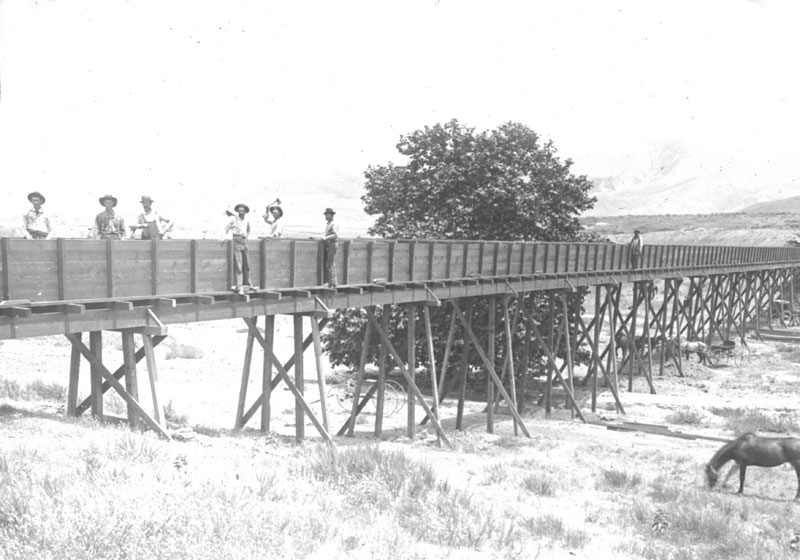
Photo Credit: Whittier Public Library.
By 1900 the Whittier Citrus Association was formed and their “Quaker Brand” citrus was soon known around the world. In 1903 the association built a large packing house to process and ship out their citrus. When opened, the Whittier Packing House covered 12,240 square feet, but was shortly after expanded an additional 5,000 square feet By 1906 they were shipping an average of 650 carloads of oranges and 250 carloads of lemons a year.
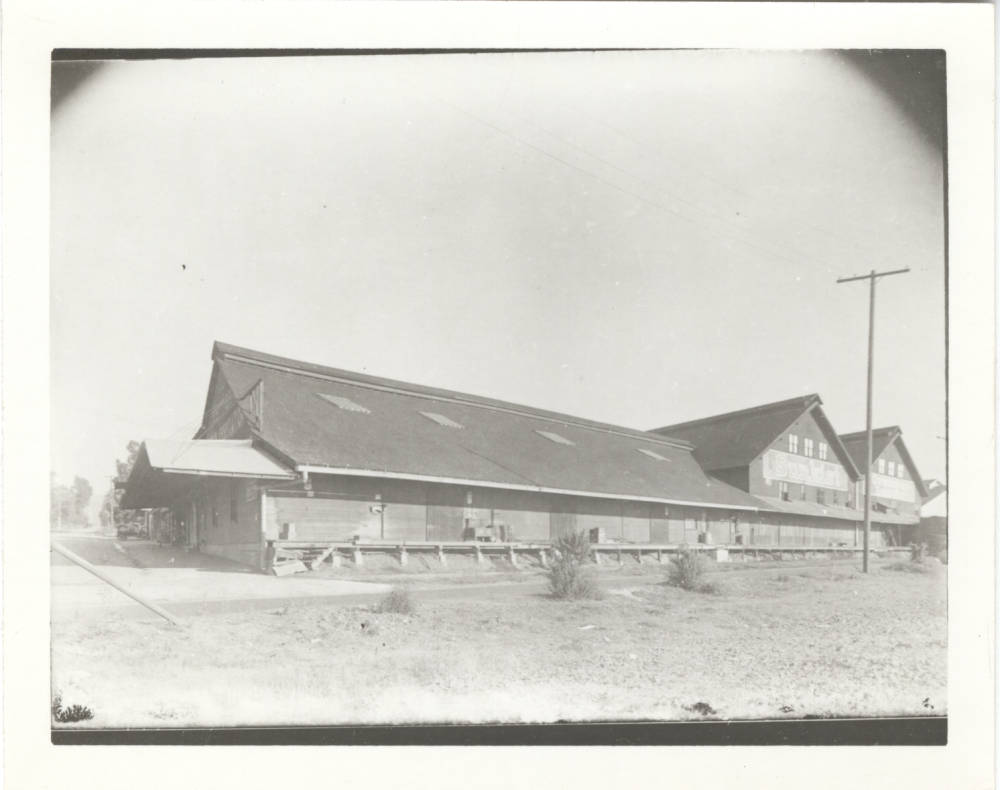
Photo Credit: Whittier Public Library.
The citrus industry continued for a few decades, but after WWII the city of Whittier grew rapidly and soon those citrus groves were subdivided and developed and the Whittier Packing House ceased operations in 1951.
Not much is known about what the Packing House was used for between 1951 and 1978. In the late 1960s it was home to Bob May’s TV-Stereo Appliances, then sometime in the 1970s it was turned into a business called “Buy and Save” and then in 1978 it became Rattan Factory Sales. In 1980 it was turned into King Richard’s Antique Madness Mall and became the largest antiques mall in the state of California.
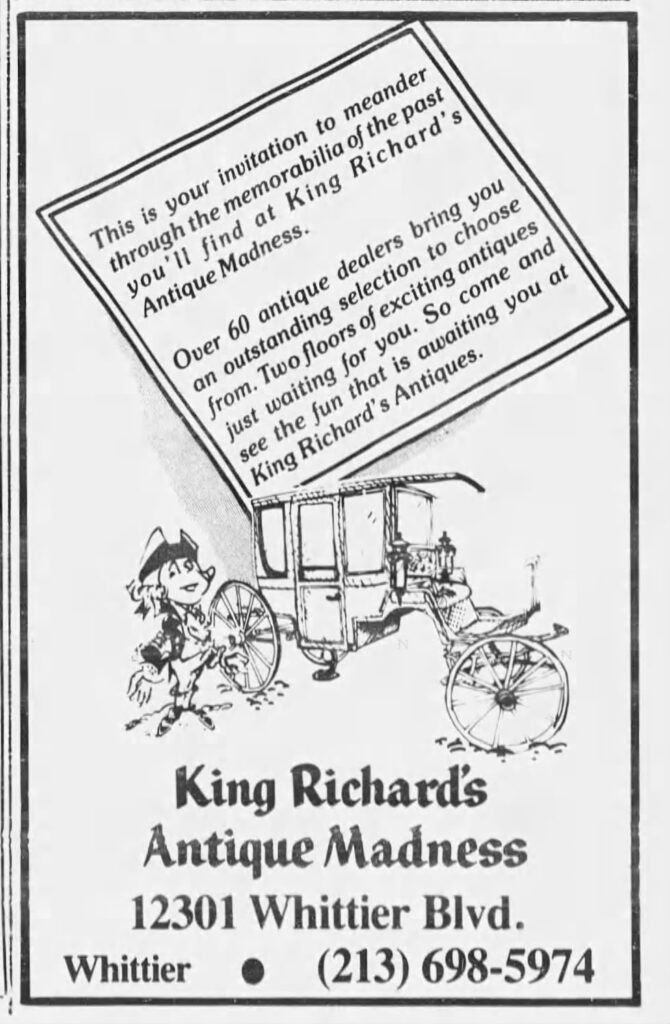
Today King Richard’s Antique Center encompasses almost 60,000 sq feet, with 140 vendors spread across 302 spaces. You can find Furniture, vintage items, vinyl, jewelry and even some pieces of Whittier history. And they also offer on-site services like appraisals and clock repair.
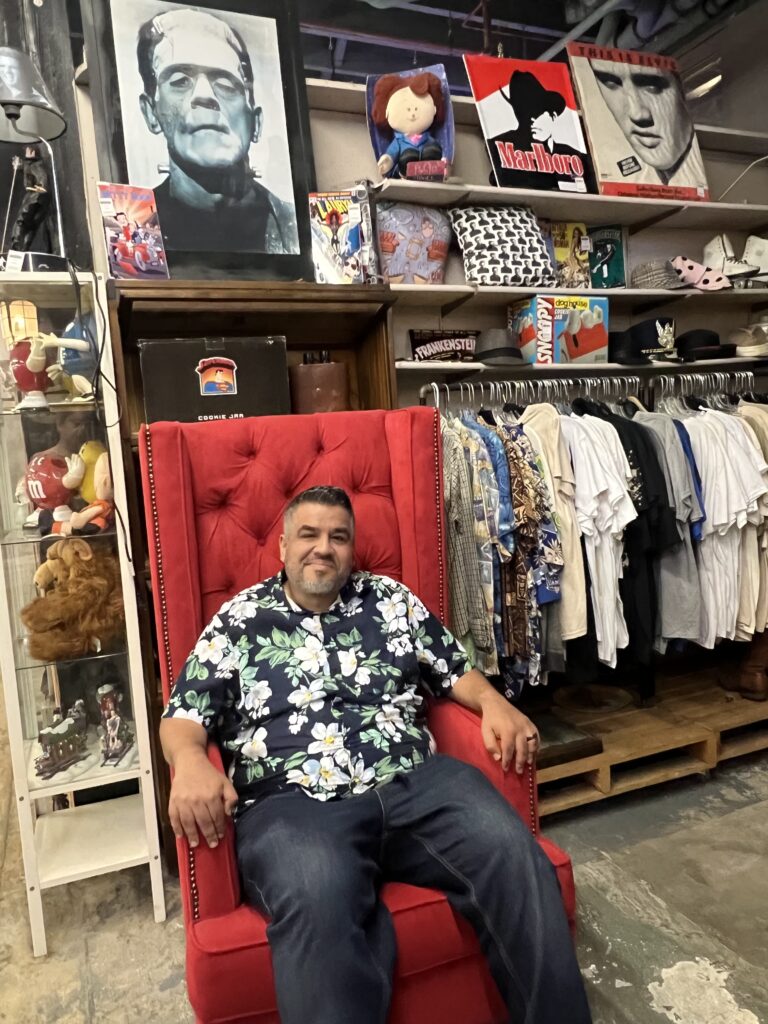
So if you ever need to shop for something unique for that special someone or for your house, why not come to King Richard’s? There’s nothing cooler than shopping for antiques inside a building that’s also a giant antique.
Our 3rd and last stop is Rose Hills Memorial Park, the largest cemetery in North America and the only one that I know that has a neon sign (more on that later).
Rose Hills was founded in 1914 as Whittier Heights Memorial Park by Augustus H. Gregg and some fellow Whittier businessmen. The 18 acre cemetery was established to serve the growing city of Whittier and as the city grew, so did the cemetery.
In 1917, the first Mausoleum was built on the property, it was actually the 2nd public Mausoleum built in Southern California–The first being in the city of Anaheim.
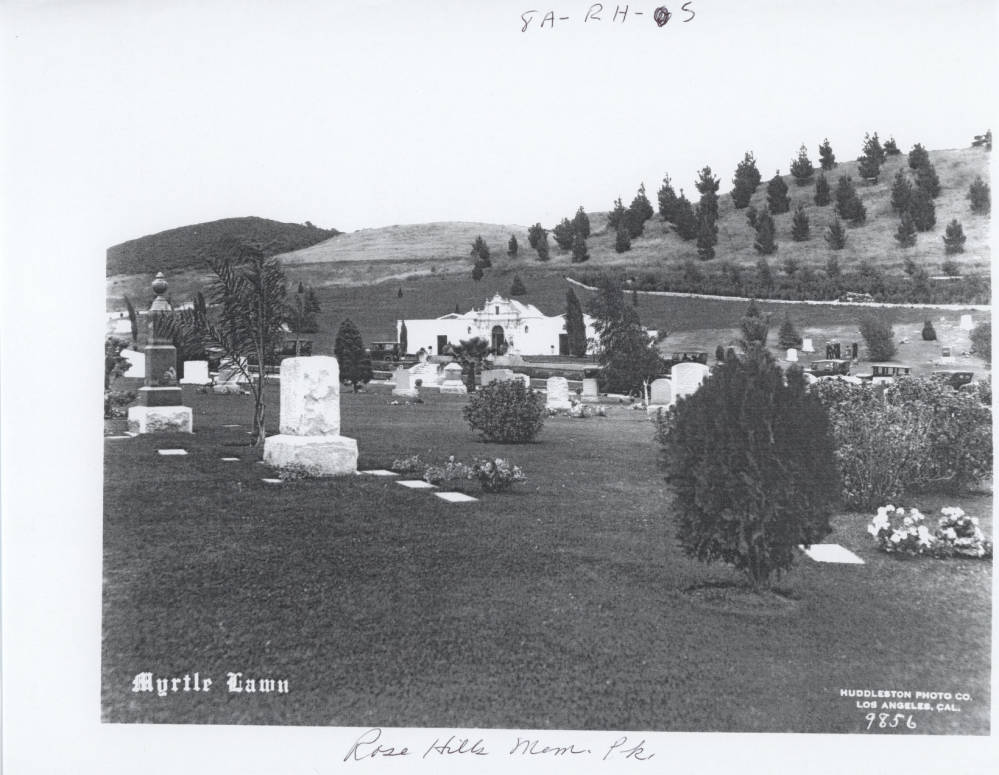
Photo Credit: Whittier Public Library.
In 1928 Augustus’ son John Gregg, took over leadership of the cemetery and began an era of expansion that continued into the 1950s where at its largest, the cemetery spanned over 2,500 acres, although today it only covers 1,400.
In 1930 the second mausoleum at the cemetery was built; Named “El Portal de la Paz,” it was built to reflect California’s early Spanish mission architecture and features had painted ceilings, carved wood furnishings, and stained-glass windows.
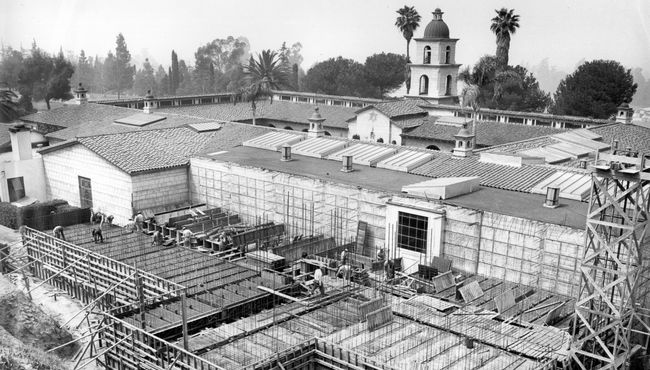
Photo Credit: Rose Hills Memorial Park.
Also in 1930, it was decided that the name of the cemetery should be changed, so a contest was held among local residents and the name “Rose Hills Memorial Park” won and the cemetery was officially renamed in July of 1930.
The following decades saw the reshaping of the hillsides of the property to gently sloping lawns for cemetery use and the construction of additional buildings and features, including a crematory and small chapel that is now called the Rainbow Chapel in 1942 and the addition of the Rose Hills neon sign in the 1940s.
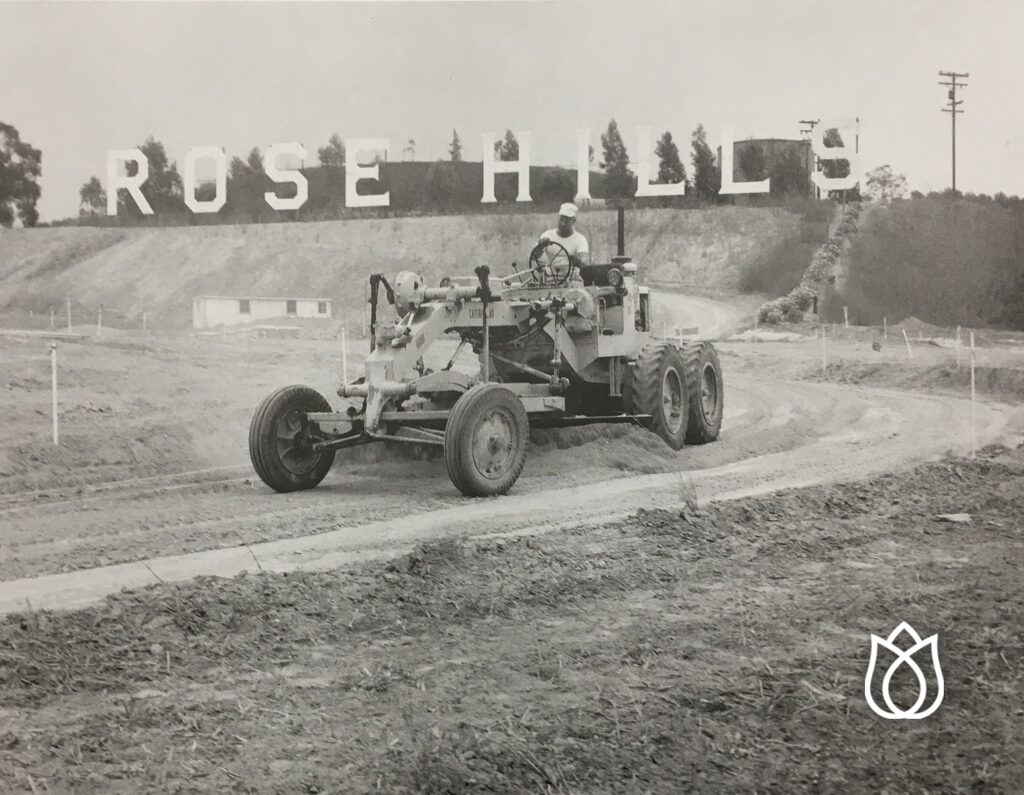
Photo Credit: Rose Hills Memorial Park.
Now, I’m a big fan of the sign, but I always thought it was a little bit unusual for a cemetery to have a neon sign. But according to Museum of Neon Art historian Eric Lynxwiler, “in the 1940s every modern business in America had to have a neon sign in order to say they were a modern business.” So I guess it’s not that unusual that they installed a neon sign at the time.

Photo Credit: Rose Hills Memorial Park.
The sign has been moved a few times from its original location and was briefly turned off in the 1970s, but the FAA asked Rose Hills to turn it back on because pilots used it as a visual reference, so it serves purpose beyond advertising.
The 1950s saw continued expansion, in 1956 the Rose Hills Mortuary and Flower Shop were opened, making Rose Hills one of the first cemeteries in the country to offer all the facilities and services necessary for memorialization available in one location.
In 1959, the Pageant of the Roses Garden was opened; a 3 acre rose garden that had 4,000 rose plants representing over 240 varieties of roses. The garden drew tens of thousands of guests, turning Rose Hills into a tourist attraction.

During the 1960s, several additions were made to the park, including the construction of a Japanese Garden in 1963 and the Memorial Chapel that was built in 1964 as a memorial to John Gregg, who led the expansion of Rose Hills Memorial Park and died suddenly in 1961.
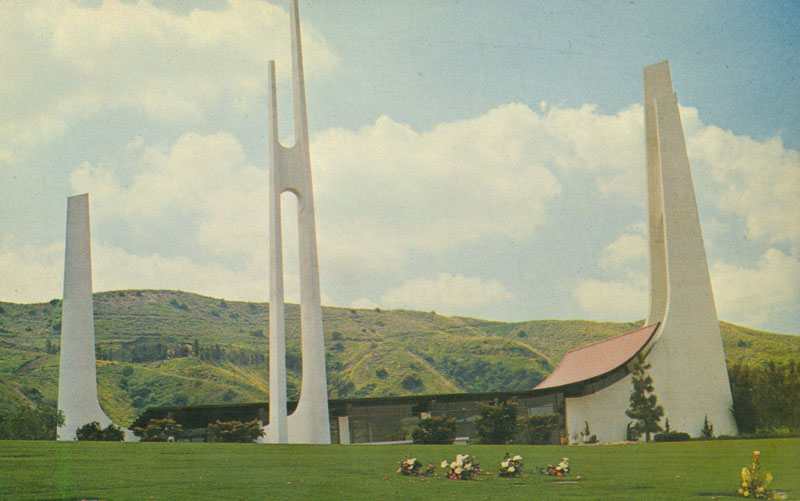
Over the ensuing decades, Rose Hills has continued to expand their facilities and services, including building a Buddhist Columbarium in 1999, which is the largest Buddhist pagoda in the United States and opening the Our Lady of Guadalupe Mausoleum in 2019. These changes have helped Rose Hills to better serve the diverse communities from the surrounding areas.
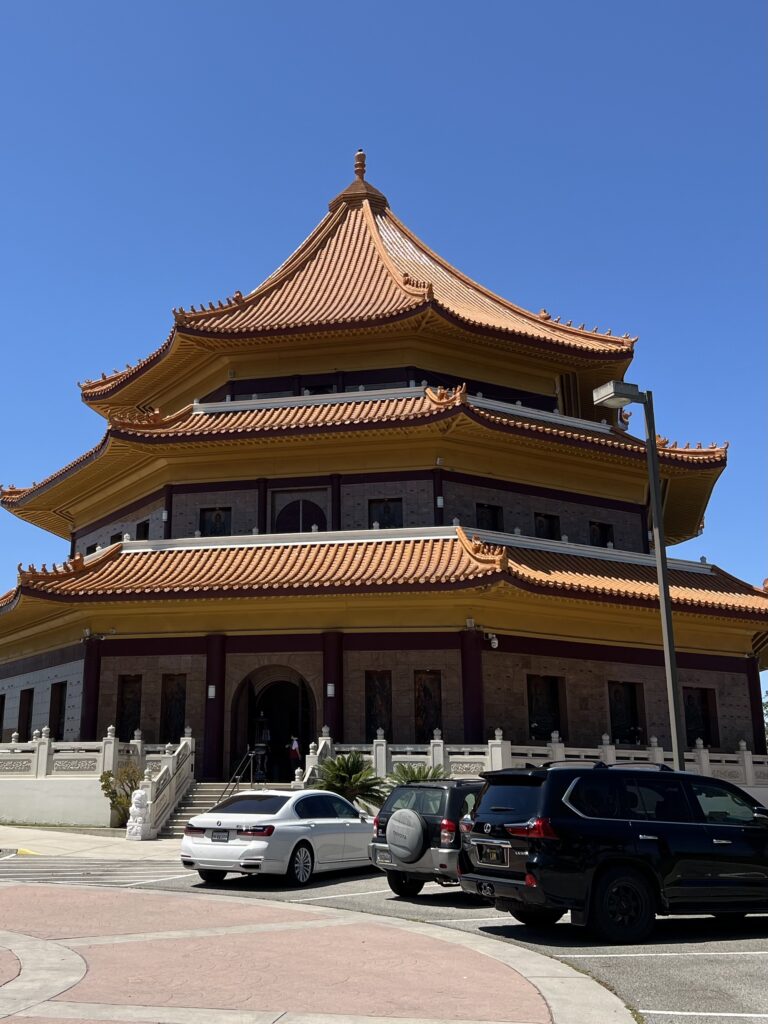
With such beautiful grounds and breathtaking views, it’s no wonder why so many people have chosen this cemetery as the final resting place for their loved ones and Rose Hills Memorial Park is prepared to continue serving the burial needs of families for many decades to come.
References:
“Salad Bowl’s Anniversary” by staff, The Whittier News. April 9, 1939.
“New El Rancho Eating House Opens Friday” by staff, The Whittier News. Dec. 21, 1939.
“Jack has 4th Restaurant” by staff, The Whittier News. March 13, 1941.
“Jack Opens Uptown” by staff, The Whittier News. May 14, 1943.
“Several Whittier Businesses Plan Expansions, Change in Location” by staff. The Whittier News, July 14, 1959.
“Jack Corcoran” by staff. East Review, Nov. 14, 1985.
“Has Jack’s Whittier Restaurant Changed Too Much? Updates Prevent Listing as Historic Landmark” by Mike Sprague, The Whittier Daily News. Aug. 29, 2017
“Articles of Incorporation Have Been Filed for the Whittier Citrus Association” by staff, The Whittier News. June 22, 1900.
“Citrus Assn. Wil Probably Enlarge Packing House this Winter” by staff, The Whittier News. Sept. 12, 1903.
“History of San Bernardino and Riverside Counties” by John Brown Jr. pg. 1181-1182.
King Richard’s Antiques | About
“Our History: How a Michigan Lumberman Saved Whittier with Citrus” by Candi Nash
“Spanning 57,000 Square Feet in a 114-Year-Old Building, The State’s Largest Antique Store is Hiding in this Southern California Suburb” by Natasha Kayes, Only in Your State. Nov. 15, 2022.
“Rose Hills: A Place to Remember” by Maureen R. Michelson, pg. 36-40, 44, 48-49,52-57. 60, 62-65, 72, 76, 92-99
“Off-Ramp Solves the Mystery of Rose Hills Cemetery’s Giant Neon Sign” by Staff, LAist. March 4, 2015.
“Famous Grave Tour – Rose Hills” by Hollywood Graveyard YouTube Channel, Aug. 23, 2018.

